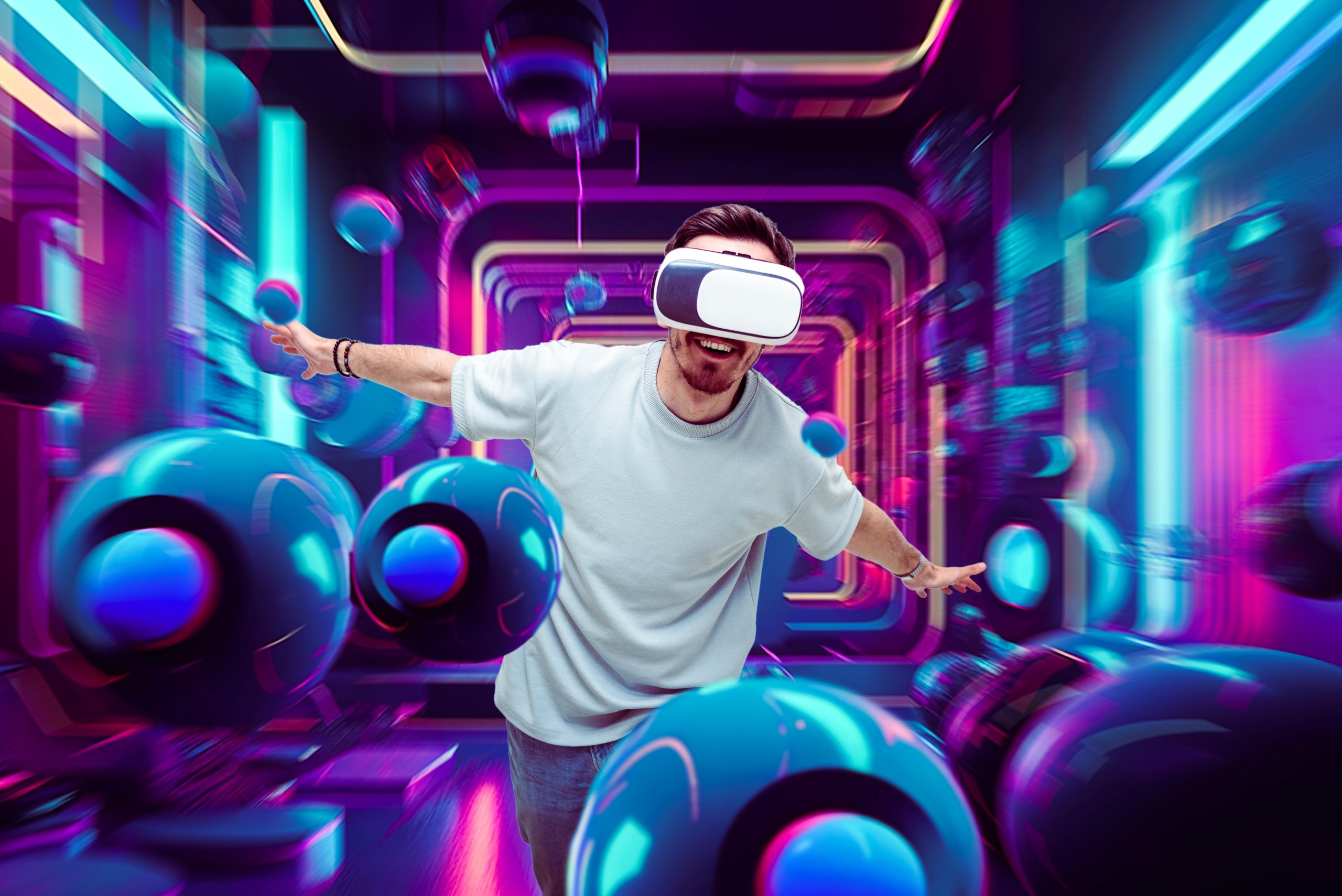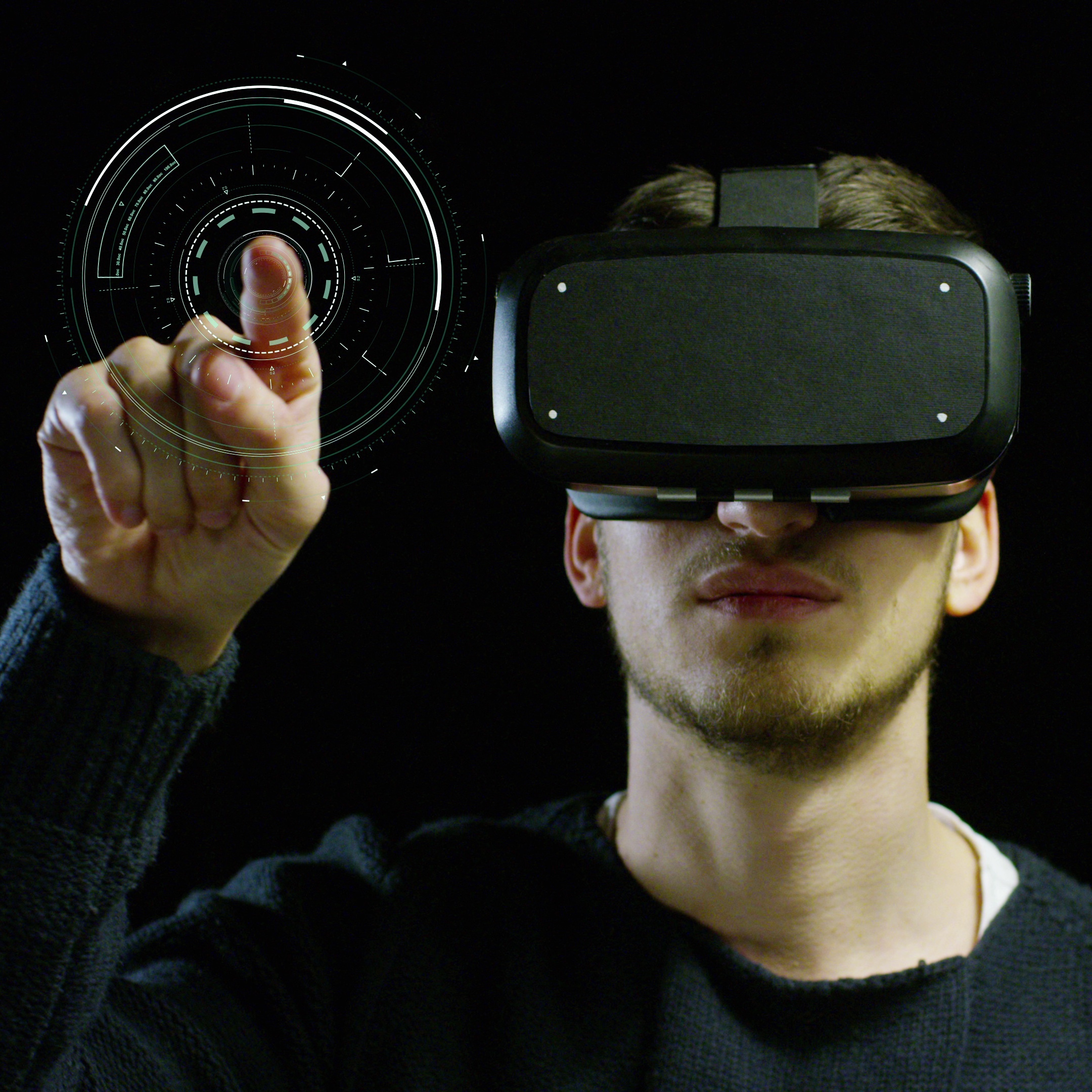8 Steps to Transform Traditional Spaces into Immersive Virtual Experiences
A Harvard Business Review article from just last year made this shocking revelation: “B2B sellers often think of customers as rational decision-makers who seek to maximize value, reduce costs, and save time. But a study of 2,128 office workers across the United States, the United Kingdom, France, Germany, Spain, and Italy found that B2B customers prefer interactions that fuel their psychological needs — even if they require more time or cost more money.” The three psychological needs — autonomy, relatedness, and mastery — open up a wealth of opportunities for elevating service
To support autonomy (and still get your audience to choose your band), you must tell them about your brand in a sufficiently compelling way that negates the need for you to push a choice in your favor — you want it to be the most natural and autonomous choice there is.
What better way to support relatedness than to let customers relate to your product (or your manufacturing techniques) quite literally and physically?
Meanwhile, to support mastery—let them see behind the scenes, let them learn something new, and, best of all, let them do so autonomously.
Immersive technology lets you achieve all of the above. At magineu, we create world-class immersive virtual experiences every day. In this blog, we share our best learnings and hands-on intelligence on how to bring your own augmented and virtual reality space to life.
Bring your XR vision to life in 8 steps.
Step 1: Identify your goals
Before you transform your traditional space with immersive technology-led experiences, you need to have a critical understanding (and stakeholder alignment) of why you’re undertaking this exercise in the first place.
Chalk out, discuss, and cement a set of goals that you intend to achieve with your immersive virtual experience. This could range from customer-facing brand building to B2B brand evangelism aimed at conversions, executive onboarding, training and simulation, product prototyping for investors and regulators, and so on.
You need to do this before you even start thinking about what immersive assets match your brand story: your goals have a fairly significant bearing on the story you will tell through the assets, which will, in turn, impact your choice of immersive assets and your virtual experience design.
Step 2: Take stock of your space
Next up, take a good, hard look at the traditional space that you want to transform into an augmented reality and virtual reality space. How many existing assets would you like to retain? Here’s an example of how you might evaluate your current set-up: Maybe you have a static journey wall, and you’d like to maintain some of the old images and brand artifacts but AR or VR to some of the elements.
Never make the mistake of doing away with traditional elements that are a mainstay of your brand identity, especially if you are a legacy brand.
If you’re starting out with a new space, consider the audience you intend to attract. You want to choose a location that is convenient for your target audience—an immersive virtual experience can transport your audience to a remote location instead of making them travel there.
Other considerations during this phase include the number of assets you can comfortably accommodate, the size of your on-site facilitator team, and budget-goal alignment.
Step 3: Decide how you will get your idea off the ground
At this point, it’s time for you to put all of the thinking and evaluation from Steps 1 and 2 into action. But you have another critical choice to make before that happens. Will you shoulder the project internally or outsource?
DIY
Today, companies have access to platforms and tools that allow you to create virtual reality spaces independently. You can select this option if you already have had the chance to develop expertise in virtual experience design. One example of such a platform is XR Design Studio PlugXR (which has companies like Amazon on its client list) and OWNVerse.
Outsource
For a lot of companies, a far less risky option is to partner with an experienced service provider with a formidable global client list. That’s where our team at magineu comes into the picture. We’ve worked with top names across a variety of sectors, including steel manufacturing, petroleum, consultancy, and even government projects. When you work with a partner like us, you get your end-to-end needs met right from designing, developing, and sustaining an experience center with high-quality program management and rigorous execution. Our design for an experience center involves space and interior design, service experience design, wayfinding and visitor choreography, communication design, content and media design, XR solution design, software design, selection of digital and other hardware, and even sound and light choreography.
Step 4: Select your immersive tech
According to our clients, this is the most exciting part of the development journey, where you finally sit down to select the immersive technology and assets that will transform your traditional space into a thrilling, immersive virtual experience. Here are some tips to help you make the right choices at this stage:
Tip #1: Make sure the exhibits/ installations come together as a whole
You want to ensure a seamless flow throughout the immersive virtual experience. Your visitor’s path of discovery should mimic storytelling with an introduction, high point, and conclusion.
Tip # 2 Let your brand narrative take center stage
Immersive technology is exciting, but avoid thinking of your virtual experience design from a “What immersive technology can we throw in there?” lens. Instead, try asking yourself two crucial questions as you evaluate the options at your disposal:
Question 1:
What story have I been trying to tell that I can express to customers (or other targeted stakeholders) with greater ease, in deeper detail, or for greater impact?
Every experience center is different, but here’s a ready reckoner of what requirements would look like depending on your needs and target audience:
- Customer facing brand
Goals: brand awareness, brand recall, brand positioning, and general buzz-making.
The content you would want to showcase would typically include:
– Legacy products/ solutions
– Award-winning products/ solutions
– Future-facing products/ solutions
- B2B brand
Goals: reinforcement of positioning and context-setting for high-profile meetings that decide the future of the brand.
The content you would want to showcase would typically include:
– Values
– Vision
– Milestones
– Founders, if relevant
– Work
- Marketing funnel-based immersive virtual experience
Goals: Convert leads into customers.
The content you would want to showcase would typically include:
– Relevant products
– Achievements
– Proof of work
- Simulation/ training
Goals: Get employees job-ready and incident-ready from the get-go in a no-risk environment.
You would need:
– Gamified training
– Gamified tests
(These should typically emulate what on-ground risks and realities would be like.)
- Product prototyping and regulatory (or any other) approval
Goals: Enable a product experience including specs, parts and components inspection, and more.
The content you would want to showcase would typically include:
– What it would be like to use the product
– View the insides of the product (like using a digital twin to understand an engine’s safety and adherence to other standards)
Question 2:
Which piece of immersive tech can help me bridge this gap?
Tip # 3 Invite allied tech to the party
Combine immersive experiences with other types of cutting-edge tech, including AI, IoT, and digital twin technology.
Step 5: Think through the 4 elements that make (or break) your immersive virtual experience
- Visual Realism
Visual realism generates lifelike images that align with real-world events for your virtual reality space. This high level of visual accuracy fosters a sense of connection and authenticity. It creates a sensory environment that enhances memory formation.
For instance, in a virtual tour of your factory, you would definitely include the movements that one associates with machinery and equipment, mimicking how these occur in real life.
- Sensory Engagement
Sensory engagement involves appealing to customers through multiple senses, deepening the immersiveness of the experience. Visitors who experience sensory engagement are likely to feel more physically present in the virtual environment and enjoy improved recall as a consequence.
For example, as part of incident training, you might want your factory trainees to smell a specific gas or experience a steam or heat sensation.
Pro-tip: Remember to play with lighting as part of your virtual experience design, especially when the experience center’s theme allows for it.
- Spatial Audio
Spatial audio mimics how sounds behave in a real environment, adding an additional layer of depth to your virtual reality space. This involves using sound to create a perception of space and depth within the experience.
Examples include the hum of machinery on a factory tour, sounds like birdsong on a destination or hotel tour, and lapping waves on a tour of a destination or hotel.
- Storytelling & Narration
In addition to what customers see and feel, you should have voiceovers or in-experience interaction that guides your visitors through the immersive virtual experience. For example, in a factory tour, you might have a voiceover saying things like, “Explore x machinery to your left, and our state-of-the-art y equipment on the right.” In-experience interaction may play out as clicks or interactions with in-experience elements, like turning a lever or flipping a switch.
Especially at this stage, having a specialist to guide the development and amalgamation of these elements can help you develop your immersive virtual experience with a higher degree of realism and success.
Step 6: Get fabrication, construction, and development underway
During this stage, you will work closely with the creative team entrusted with your experience center to share content and other creative assets, brand insights, relevant customer-related information, and other information that will fuel your immersive assets.
Step 7: Coach your on-site team
Your team of facilitators is a pillar of your immersive virtual experience center and should be trained to enable your goals. Host dedicated, hands-on training sessions on how to operate, troubleshoot, and conduct daily management and care for your immersive assets.
However, that’s just one piece of what your facilitators will handle. Training should also include soft skill development around how you expect the team to conduct themselves with your target audience, especially if you expect to welcome dignitaries and other senior stakeholders. Host role-play-based practice sessions to develop know-how around guiding and supporting the exploration of your immersive virtual experiences without being obtrusive or pushy.
You should also train the team on guiding and enabling photo ops that can be used for social media posts and media publicity (if the visitors are sufficiently high-profile) and that can create buzz around your brand.
You’re now ready to roll! Things can get busy and exciting fast, so the next step is crucial as part of your pre-launch workflow.
Step 8: Plan your maintenance schedule and earmark dates for discussions about upgrades
Immersive virtual experience centers need to dazzle with cutting-edge tech that reflects the brand’s own future readiness and technological prowess. This means maintaining a pulse on the tech landscape and considering upgrades over a 5-year landscape to avoid redundancies.
Your content should also be reviewed and updated regularly. For example, if you receive a new award that’s a big deal and likely to impress your audience, it should show up in your accolades display zone. Appoint a designated in-charge and workflow around this task to ensure ownership and accountability. For example, maybe the PR team that sends out press releases about noteworthy developments also sends a memo to your on-site facilitators, who reach out to the creative team that manages on-site content.
Additionally, maintenance is crucial to keeping your immersive technology in the best shape and can be part of your contract with your creative partner. For example, magineu supports brands with 5 years of maintenance. After all, just like a sports car, advanced tech needs regular care, management, oversight, and security management.
Be impressive. Try immersive!
Everyone’s going immersive. Fashion retail brands have virtual try-on. And immersive ad campaigns are all the rage across brands.
But that said, doing it just like everyone else defeats the purpose. Your immersive virtual experiences should reflect your brand’s DNA. With magineu, achieving the 8 steps outlined in this blog is easy, outcome-driven, and a cut above. Contact us to brainstorm how you can transform your traditional space into an immersive virtual experience that wows your target audience.



